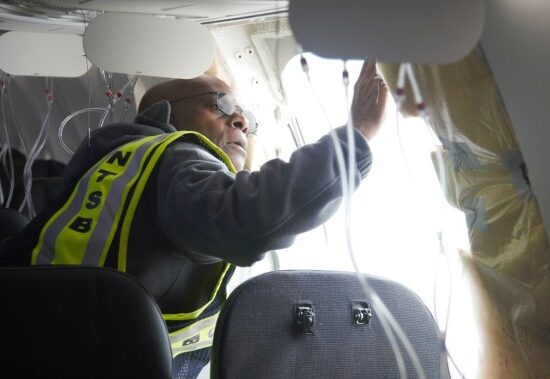
The official start to tax season begins on Monday, Feb. 20, this year as the Canada Revenue Agency (CRA) opens its portal for Canadians to file.
Before you call up your accountant or wade into the taxation trenches yourself, there are a few changes you should know about for the 2022 tax year.
Read more:
Filing taxes on your own for the first time? Here’s what to know
Read next:
Here’s how interest rates could affect Canada’s housing market in 2023
Bruce Ball, vice-president of tax for CPA Canada, tells Global News that it wasn’t a blockbuster year for changes to tax legislation.
“There are some new things to keep in mind, but there weren’t maybe large changes like there have been in other years,” he says.
For Canadians with medical expenses, those who received COVID-19 benefits and some homeowners, there are some expanded benefits and other filing changes this year that might tip you towards a tax return at the end of the process.
Here’s what experts like Ball are flagging to their clients about filing taxes in 2023.
When is the tax filing deadline in 2023?
In a normal year, the deadline for most Canadians to file their taxes is April 30 — but this year, that date falls on a Sunday.
As a result, you’ll have until May 1, 2023, to file your 2022 tax return.

There’s a later deadline of June 15, 2023, for those with self-employment income to report.
But Jamie Golombek, managing director of tax and estate planning at CIBC Private Wealth, notes there’s a caveat for anyone in that category. If you owe money on your taxes, the deadline to pay that is still the earlier May 1 date.
One final note on dates: If you’re planning to contribute to a Registered Retirement Savings Plan (RRSP) to reduce your taxable income for 2022, your deadline is March 1, 2023.
Read more:
As the RRSP deadline approaches, here’s what to know as you save for retirement
Read next:
Windfall tax on large Canadian companies needed to recover public funds: report
Changes to COVID-19 benefit repayments
Ball says there’s a new form to fill out for anyone who received and had to repay COVID-19 support, such as the Canada Emergency Response Benefit (CERB) or Canada Recovery Benefit (CRB).
If you repaid these benefits in 2022, form T1B would let you amend previous returns to file the repayment in a year that you actually received the initial support, be that for 2020 or 2021.
“Essentially, the CRA will go back and adjust the prior year if you choose to claim it in the year you received that rather than the year you repaid it,” Ball explains.
This will apply the associated deduction to a previous year’s return automatically, potentially affecting an earlier year’s tax return.
Tax changes for homeowners
Two major benefits for homeowners have been doubled for the 2022 tax year.
The first-time homebuyer’s tax credit is now worth $10,000 for those who purchased a home after 2021, up from the previous $5,000.
The annual expense limit for the home accessibility tax credit, which allows seniors and homeowners with a disability to offset costs put towards making their residences more accessible, is also now doubled to $20,000.

One major change to the tax code is a new anti-flipping tax targeting homeowners who sell their homes without living in them for more than a year.
Golombek notes that while this new legislation went into effect on Jan. 1, 2023, it will not apply to homes sold in 2022. Those who bought a home last year, whether they intended to flip the home quickly or not, will need to keep the new rules in mind if they need to sell in 2023.
He says that the new rules on flipping mean that anyone looking to sell their home after less than a year of living in it will see their net profits fully taxed as though it were professional income. The primary residence exemption, which allows for a stay on taxes when you sell your own home, will not apply, he says.
“In other words, you’re going to be taxed on it as 100 per cent business income, not even a capital gain, which is 50 per cent taxable.”
Ball notes that there is some “good news” for Canadians who find themselves having a sudden change in housing situation for an explainable reason, such as a sudden death in the family or career move that takes you out of your city.
The government will take these explanations into consideration and could still allow the primary residence exemption to apply if you prove your extenuating circumstances, he says.
Certain medical expenses now eligible for claims
Some Canadians paying for certain medical expenses out-of-pocket will be able to claim these on their taxes thanks to a few new changes, according to the CRA website.
As it relates to fertility, some expenses related to surrogacy or obtaining donor sperm or eggs can now be claimed.
Type-1 diabetics are also now eligible to have their condition recognized for compensation under the disability tax credit. This change applies retroactively to the 2021 tax year and later.
Have an eye on next year’s taxes, experts say
Canadians flipping through their expenses for the past year as they prepare their tax returns might feel a second wave of pain from the decades-high levels of inflation hitting their pocketbooks in 2022.
But Golombek says there will be a silver lining to those inflationary woes — eventually. Since tax brackets are indexed to inflation, next year’s marginal tax rates will have grown at a much higher rate than in some previous years.

As a result, even if your income is steady from 2022 to 2023, you’ll end up paying less tax on your highest earnings amounts next year as the brackets move higher.
“So you won’t notice much on the 2022 return. But certainly in 2023, your tax should be less, even if your income is flat,” he says.
Golombek and Ball both say that aside from RRSP contributions and some possible income splitting with your spouse, there’s little you can do at this point in the year to affect your 2022 tax return.
Rather, both suggest getting an early start on 2023 tax planning.
Ball says it’s wise to find a place to store and track deductible expenses like charitable donations and medical costs as they come up so they’re not forgotten when it comes time to claim them the following year.
“The big thing is to start early and start accumulating,” he says.
Golombek notes that for those who haven’t bought a home yet, 2023 will see the introduction of the Tax-Free First Home Savings Account.
Read more:
When will Ottawa end blind bidding? Still no timeline for Home Buyers’ Bill of Rights
Read next:
Alberta to pilot oil and gas royalty breaks for legally required well cleanup
This will allow prospective homebuyers to put away $8,000 annually — tax deducted, like an RRSP or other registered account — and have that money invested and grow tax-free for 15 years to a maximum of $40,000 per person. At any point, these savings can be withdrawn tax-free for a downpayment on a first home.
The forthcoming account is a “wonderful opportunity” for those looking to plan their taxation and savings strategies while looking to break into the housing market in the years to come, Golombek says.

















